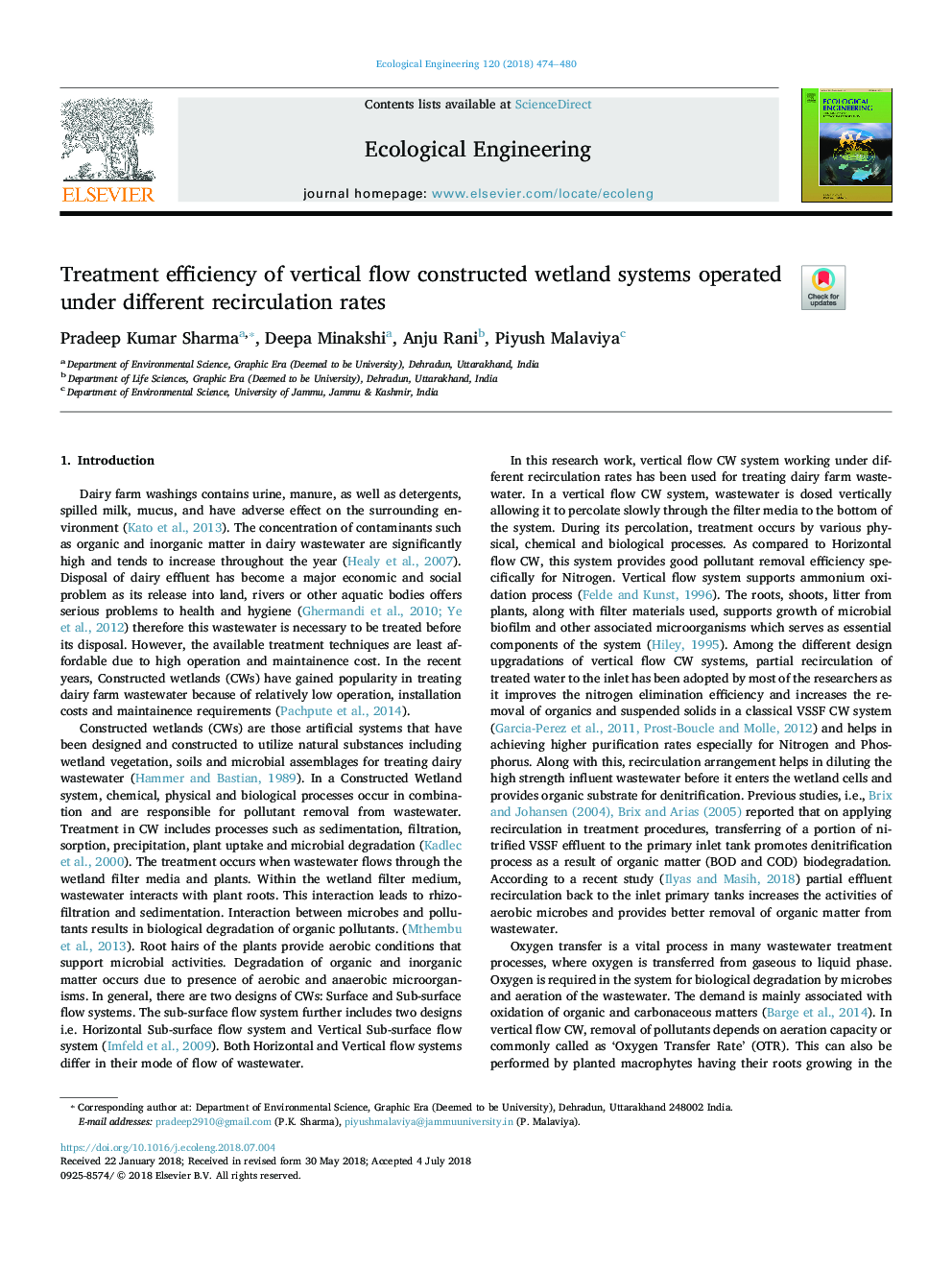| Article ID | Journal | Published Year | Pages | File Type |
|---|---|---|---|---|
| 8847849 | Ecological Engineering | 2018 | 7 Pages |
Abstract
- Three pilot-scale VFCW systems (CW1, CW2 & CW3) with recirculation arrangements of 25, 50 and 75% were operated to treat dairy wastewater.
- The average concentration of pollutants in the influent was recorded as: BOD (323.0â¯Â±â¯139.3â¯mgâ¯Lâ1); TP (37.6â¯Â±â¯13.3â¯mgâ¯Lâ1); NH4-N (68.9â¯Â±â¯13.5â¯mgâ¯Lâ1) and TN (114.9â¯Â±â¯22.6â¯mgâ¯Lâ1) during the study period.
- Recirculation arrangement resulted in an increase of 10.0-19.3% TN removal from all CW systems.
- Maximum average purification rates of TSS (99.3%), BOD (97.8%), TP (97%), TN (50.5%) and NH4-N (50.7%) were achieved in CW3 with 75% recirculation.
- OTR value of all three CW systems ranged from 27.0 to 54.4â¯g O2â¯mâ2â¯dâ1 before recirculation showed an increase after recirculation and was found between 79.6 and 154.8â¯g O2â¯mâ2â¯dâ1.
Related Topics
Life Sciences
Agricultural and Biological Sciences
Ecology, Evolution, Behavior and Systematics
Authors
Pradeep Kumar Sharma, Deepa Minakshi, Anju Rani, Piyush Malaviya,
